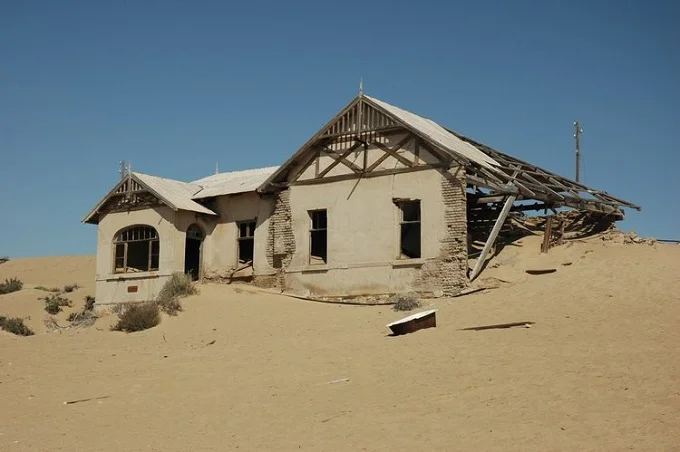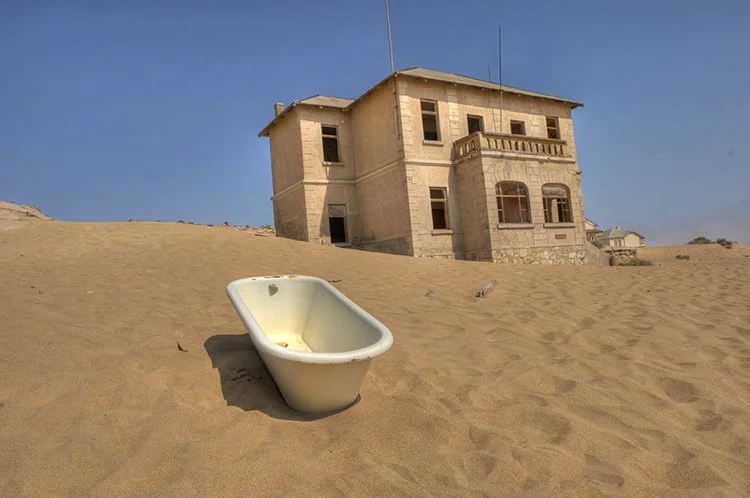Kolmanskop: victim of the diamond rush in Namibia

The city as a person is born, lives, and dies. Some earlier, some later. After the city is left by its last inhabitant, it becomes a ghost: the city exists, but there is no life in it. So it happened with the small town of Kolmanskop in Namibia.
It is located 10 kilometers off the coast of the Atlantic Ocean, east of the port city of Luderitz.
The short but vibrant life of the city of Kolmanskop completely fits into the first half of the 20th century. At the beginning of the 20th century, these places had Germany. In 1908, Zacharias Lewala, an employee of the Luderitz railway line, discovered small diamond inclusions right in the sand of the desert and took them to his superiors. An examination was carried out, as a result of which it was established that these were, in fact, diamonds. Realizing that the region is very rich, German miners set about developing and extracting this mineral.
Thanks to diamonds, a whole city with a very developed infrastructure quickly grew on the excavation site, in addition to the workers’ houses, a school, a hospital, a gym, a theatre, and a casino. There was even a workshop for the production of ice and lemonade, as well as an indispensable bowling hall in any desert. Kolmanskop was created in the architectural tradition of Germany. This is visible in all buildings.

The city residents felt more than comfortable since the profit from diamonds easily provided all their needs. Even water, which is practically absent here, was brought in hundreds of kilometers away.
The city reached its greatest development in the 1920s when 340 Germans and about 800 local workers lived here.
But after the First World War, the level of production began to fall, and in 1926 the diamond field almost completely dried up. In addition, richer diamond deposits were found to the south. The inhabitants of Kolmanskop flocked to new places. The town began to empty, and in 1954 it finally turned into a ghost town.

Since then, nature has inexorably covered the city with sand. The city streets, houses, and all buildings now look like in a post-apocalyptic movie. The holes in the windows and the rooms, half-buried in sand, create an oppressive atmosphere. But this does not scare away (but rather even attracts) tourists. Mining company De Beers established a museum out of the city in 1980 and tidied up several buildings to preserve Kolmanskop’s history.
Now, this gloomy landmark in Namibia attracts travelers, photographers, and filmmakers from all over the world.
Interesting facts about the city of Kolmanskop

- The ghost town owes its name to a driver named Johnny Coleman. He was captured by a sandstorm in these places and was forced to spend some time here
- The first X-ray machine in the Southern Hemisphere was installed in the city of Kolmanskop
- The first tram in Africa appeared here. It connected Kolmanskop with the city of Luderitz on the Atlantic coast.
- In 1912, the volume of production was 1 million carats or 11.7% of the total diamond production in the world.




